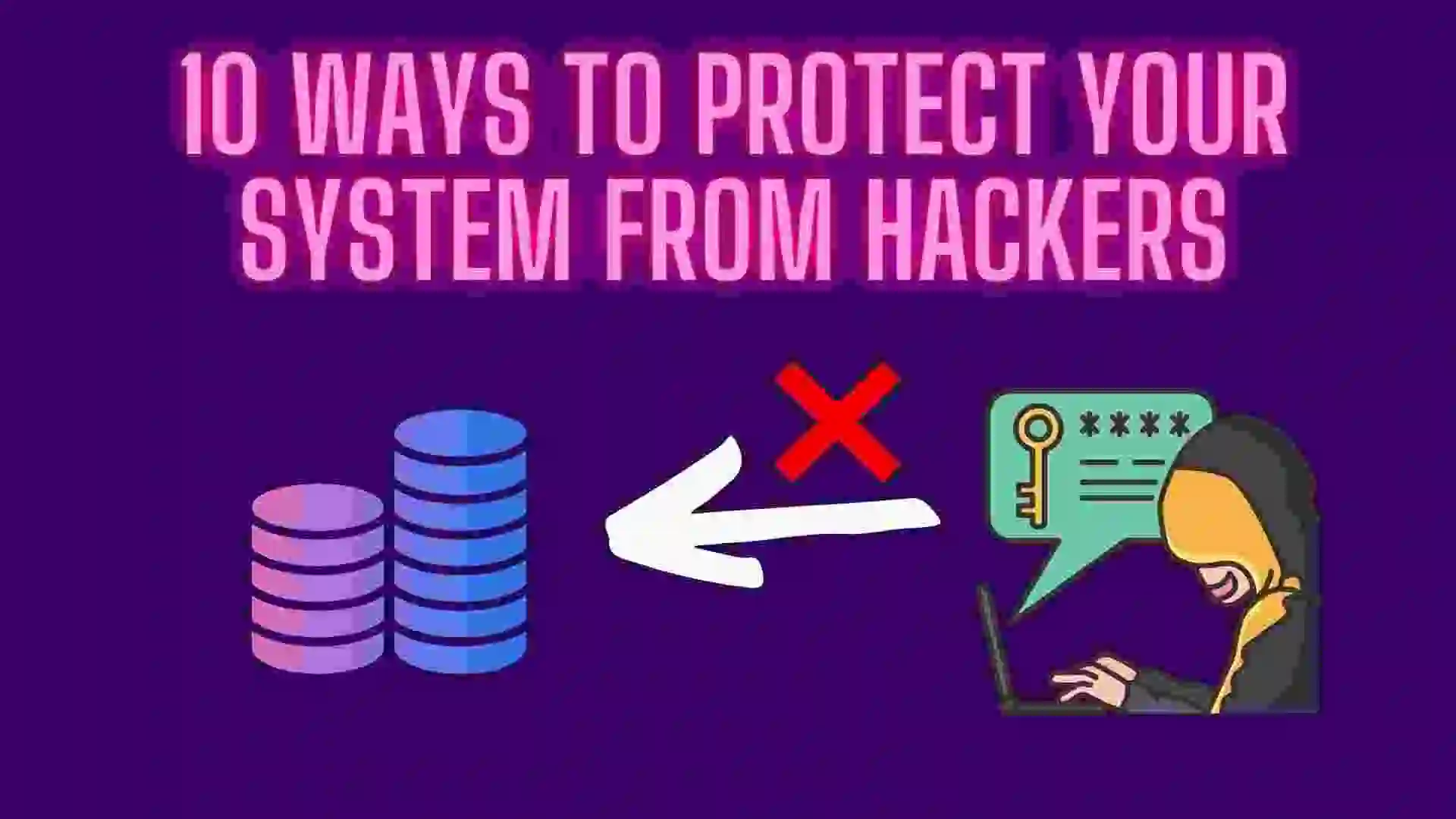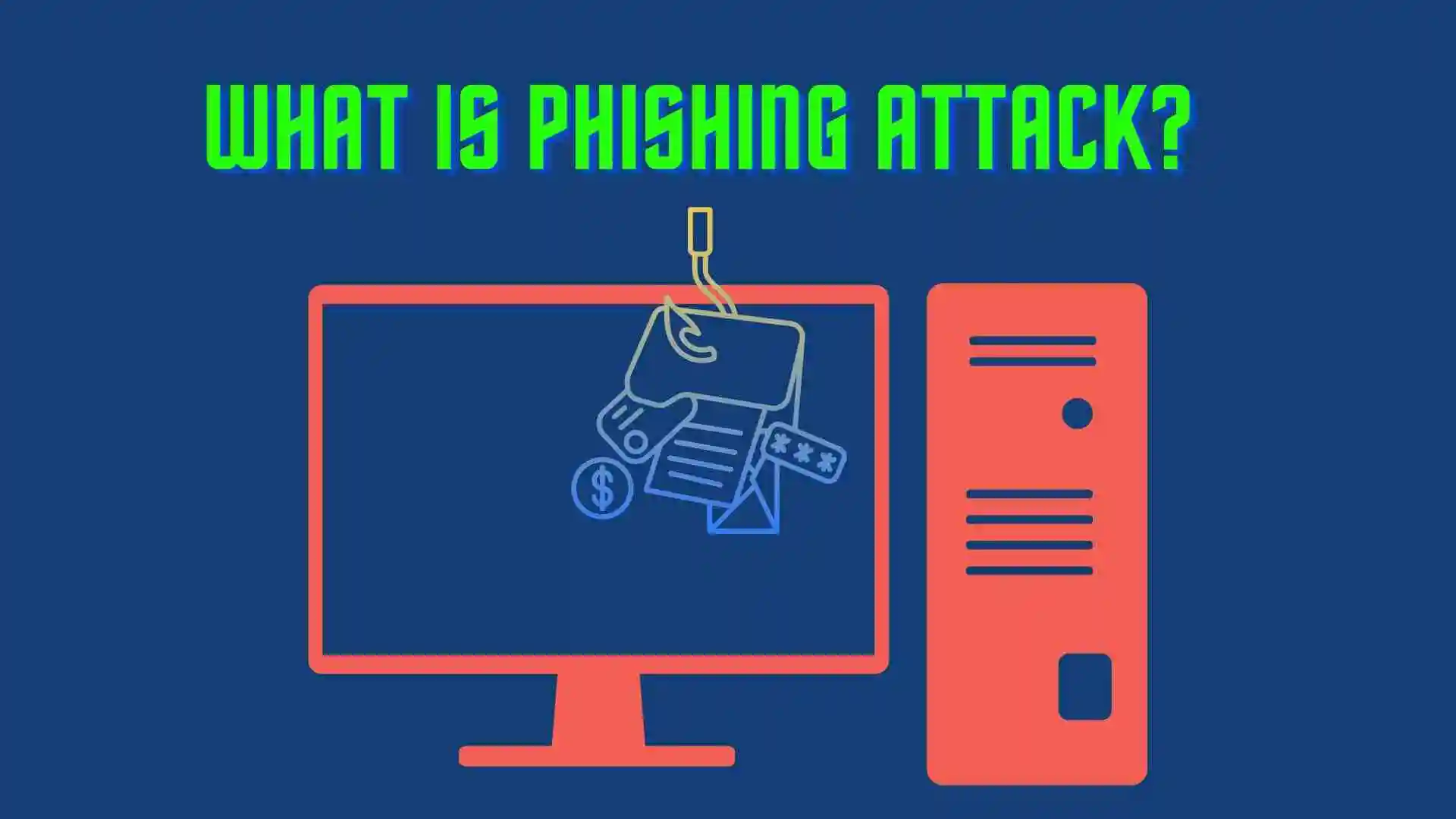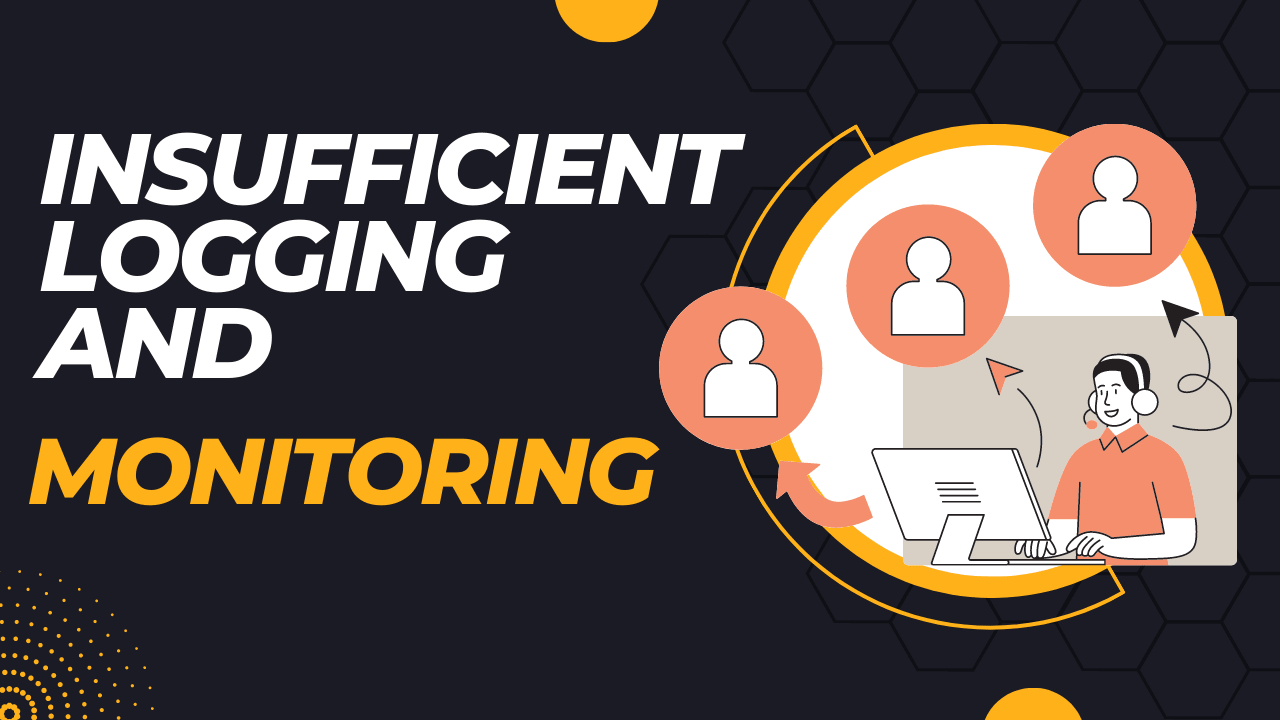In this blog, I will share important tips for being hacked by hackers. So, please try it in your system so you can be aware and can prevent it from being hacked. So let’s get started with the blog.
Table of Contents
- Tips for the User to prevent from being Hacked by Hackers
- A) Encrypt Files While Storing and Transferring
- B) Use Browser Extensions to Block Malicious Sites
- C) Install a Strong Anti-Malware Program
- D) Sanitize Your PC Manually
- E) Beware of Phishing SMS Messages
- F) Recognize Phishing Emails
- G) Recognize Signs of Fake or Malware-Infected Websites
- H) Don’t Share Any Information via HTTP Sites
- I) Enable Two-Factor Authentication
- J) Don’t Log in Via Existing Third-Party Platforms
- FAQ
- Articles on Computer Networks
Tips for the User to prevent from being Hacked by Hackers
To stop being hacked by hackers, you don’t need a lot of technical knowledge. Here are some really simple yet effective methods for preventing hacking.
A) Encrypt Files While Storing and Transferring

When you’re sharing any crucial Microsoft files with anyone or storing them on your device, USB, or cloud platform, always encrypt them. Data is “locked” using mathematical techniques during encryption using a cryptographic key. To secure plaintext data from unauthorized parties that lack an authentication key, encryption scrambles and obscures it.
Encrypting files while storing and transferring them is an important security measure to protect the confidentiality and integrity of sensitive information. Here are some ways you can encrypt files:
- Use encryption software: There are many encryption programs available that can be used to encrypt files. Examples include VeraCrypt, BitLocker, and 7-Zip. These programs can be used to create encrypted containers or to encrypt individual files.
- Use built-in encryption features: Some operating systems, such as Windows and macOS, have built-in encryption features that you can use. For example, Windows has BitLocker, and macOS has FileVault.
- Use cloud storage with encryption: Many cloud storage services, such as Google Drive and Dropbox, offer encryption options. Make sure to enable encryption and choose a strong password.
- Use secure file transfer protocols: When transferring files over the internet, use secure protocols such as SFTP or HTTPS. These protocols encrypt the data in transit.
- Use email encryption: If you need to send encrypted files via email, you can use email encryption services such as ProtonMail, Tutanota, or Mailvelope.
It’s important to note that encryption is not foolproof, and it’s still possible for encrypted files to be compromised. However, using encryption can make it much more difficult for unauthorized users to access sensitive information.
For Example:
- Click on File in the upper left corner.
- Select Info.
- Click on Protect Workbook (or Protect Document, Presentation, etc. as per the file type)
- Select the Encrypt with Password.
Anyone attempting to access this file after you set the password will need it. Make sure to provide the receiver with the password over the phone, in a separate email, or through any other contact method before sending them a protected file.
B) Use Browser Extensions to Block Malicious Sites

Browser extensions can be a useful tool for protecting yourself from malicious sites online. Here are a few examples of extensions you can use to block these types of sites:
- uBlock Origin: This is a free and open-source ad-blocking and content-filtering extension that blocks a wide range of online threats, including malware, phishing sites, and drive-by downloads.
- Malwarebytes Browser Extension: This extension offers real-time protection against malware, phishing sites, and other online threats. It also blocks unwanted ads and trackers.
- HTTPS Everywhere: This extension ensures that you’re always connecting to a site using a secure HTTPS connection, which can help protect you from man-in-the-middle attacks and other online threats.
- Privacy Badger: This extension blocks third-party trackers that can collect your personal information without your knowledge or consent.
- NoScript Security Suite: This extension blocks scripts and other executable content from untrusted sites, which can help prevent drive-by downloads and other types of malware.
By using these and other browser extensions, you can help protect yourself from malicious sites online and keep your personal information safe. However, it’s important to remember that no extension can provide 100% protection, so it’s always a good idea to use multiple layers of protection and to practice safe browsing habits.
C) Install a Strong Anti-Malware Program

Installing a strong anti-malware program is an essential step in protecting your computer and personal information from online threats. Here are some tips for selecting and installing an effective anti-malware program:
- Research and compare different anti-malware programs to find one that offers comprehensive protection against viruses, malware, spyware, and other online threats. Look for programs that receive high ratings from independent testing labs and have positive reviews from users.
- Make sure your anti-malware program is up-to-date with the latest virus definitions and security patches. This will help ensure that your program is able to detect and remove the latest threats.
- Schedule regular scans of your computer to check for malware and other online threats. Set up automatic updates and scans so that you don’t have to remember to do it manually.
- Be cautious when downloading files and programs from the internet. Use your anti-malware program to scan any downloads before opening or installing them.
- Keep your operating system and software up-to-date with the latest security patches and updates. This will help prevent vulnerabilities that can be exploited by malware and other online threats.
By following these tips and installing a strong anti-malware program, you can help protect your computer and personal information from online threats. However, it’s important to remember that no anti-malware program can provide 100% protection, so it’s always a good idea to use multiple layers of protection and to practice safe browsing habits.
D) Sanitize Your PC Manually

Sanitizing your PC manually can help remove any malicious programs or files that may have evaded your anti-malware software. Here are some steps you can take to manually sanitize your PC:
- Uninstall any programs that you don’t recognize or don’t use. Malware can sometimes disguise itself as legitimate software, so it’s important to remove anything that you don’t recognize or that you didn’t intentionally install.
- Use the built-in Windows Disk Cleanup tool to remove temporary files and other unnecessary data from your computer. This can help free up space on your hard drive and improve your computer’s performance.
- Clear your browser history, cookies, and cache. Malware can sometimes hide in these files, so it’s important to clear them regularly.
- Use the Windows Task Manager to identify and terminate any suspicious processes that are running on your computer. Malware can sometimes run in the background without your knowledge, so it’s important to be vigilant and identify any processes that are using a lot of system resources or that you don’t recognize.
- Manually check your system files and registry for any malicious code or entries. This step can be more advanced and requires some technical knowledge, so it’s important to be cautious and back up any files before making changes.
By following these steps and regularly sanitizing your PC manually, you can help ensure that your computer is free from malware and other online threats. However, it’s important to remember that these steps should be used in conjunction with anti-malware software and safe browsing habits to provide comprehensive protection for your computer and personal information.
E) Beware of Phishing SMS Messages

Absolutely, phishing SMS messages can be a serious security threat. These messages are designed to trick you into revealing sensitive information such as your passwords, bank account information, or credit card numbers. Here are a few tips to help you identify and avoid phishing SMS messages:
- Be cautious of messages from unknown senders: If you receive an SMS from an unknown sender, don’t click on any links or provide any personal information.
- Verify the sender: If you receive an SMS from a sender that appears to be legitimate, such as a bank or a social media platform, verify the message by contacting the organization directly using their official website or customer support line.
- Don’t click on suspicious links: If an SMS message includes a link, be cautious before clicking on it. Hover your mouse over the link to see if the URL is legitimate. If you’re unsure, don’t click on it.
- Don’t provide personal information: Legitimate organizations will never ask you to provide personal information via SMS. If you receive an SMS asking for personal information, do not respond.
- Keep your software up to date: Make sure your mobile device’s operating system and apps are up-to-date with the latest security patches.
Remember, always err on the side of caution when it comes to SMS messages from unknown sources, and never provide personal information unless you are absolutely certain that the message is legitimate.
F) Recognize Phishing Emails

Phishing emails are fraudulent messages that appear to come from a legitimate source, such as a bank, social media platform, or e-commerce site. They are designed to trick you into revealing sensitive information, such as your passwords, credit card numbers, or other personal information. Here are some tips to help you recognize phishing emails:
- Check the sender’s email address: Phishing emails often use a fake email address that is similar to a legitimate one. Check the sender’s email address carefully to make sure it is from a legitimate source.
- Look for spelling and grammar errors: Many phishing emails contain spelling and grammar errors. Legitimate companies usually have professional proofreaders who ensure their emails are error-free.
- Avoid clicking on links: Phishing emails often contain links that take you to a fake website that looks legitimate. Instead of clicking on the link, hover your mouse over it to see if the URL is legitimate. If you’re not sure, don’t click on it.
- Beware of urgent requests: Phishing emails often create a sense of urgency, such as telling you that your account has been compromised and that you need to act immediately. Be suspicious of any email that creates a sense of urgency.
- Check for personalization: Legitimate emails often include personal information, such as your name or account number. If an email is not personalized, it may be a phishing email.
- Use anti-virus software: Anti-virus software can help protect you from phishing emails by scanning your inbox and identifying suspicious messages.
Remember, if you receive an email that you think may be a phishing attempt, do not reply to the email or click on any links. Instead, contact the legitimate company directly to verify the email’s authenticity.
G) Recognize Signs of Fake or Malware-Infected Websites

Fake or malware-infected websites can be dangerous, as they can steal your personal information, install malware on your computer, or even take over your device. Here are some signs to look out for to help you recognize fake or malware-infected websites:
- Suspicious URL: Check the website URL carefully to make sure it is legitimate. Scammers often create URLs that are similar to legitimate ones but with slight variations. For example, instead of www.amazon.com, they may use www.amaz0n.com or www.amazon123.com.
- Poor website design: Legitimate websites often have a professional design and layout. If the website looks poorly designed or has spelling and grammar errors, it may be a fake or malware-infected website.
- Pop-up ads: Fake or malware-infected websites often have pop-up ads that are difficult to close or that automatically redirect you to another site.
- Suspicious downloads: If a website prompts you to download an app or software, be cautious. Malware-infected websites often use this tactic to install malware on your device.
- Unsecured connection: Check the website URL to see if it starts with “https://” instead of “http://”. Websites that use “https://” have an encrypted connection, which helps protect your personal information.
- Fake login pages: Fake websites may create login pages that look like legitimate ones to steal your login credentials. Be cautious if a website prompts you to log in or enter personal information.
- Security warnings: If your browser displays a security warning about the website you are visiting, it may be a fake or malware-infected website. Do not proceed to the website if your browser displays a warning.
Remember, always be cautious when visiting unfamiliar websites, and use trusted anti-virus software to protect your device from malware infections.
H) Don’t Share Any Information via HTTP Sites
Sharing personal information on HTTP sites can be dangerous, as HTTP sites do not have an encrypted connection, which means that any information you share on these sites can be intercepted by hackers. Here are some tips to help you protect your personal information when browsing the web:
- Use HTTPS sites: Always look for the “https://” at the beginning of the website URL, which indicates that the site has an encrypted connection. Websites that use HTTPS are more secure and protect your personal information.
- Avoid sharing personal information on HTTP sites: Do not enter any personal information, such as your name, address, phone number, or credit card details, on HTTP sites.
- Use a VPN: A virtual private network (VPN) can help protect your online privacy and security by encrypting your internet connection.
- Be cautious when using public Wi-Fi: Public Wi-Fi networks can be insecure, and hackers can intercept your internet traffic. Avoid accessing sensitive information, such as your bank account or email, when using public Wi-Fi.
- Keep your software up to date: Make sure your web browser and operating system are up to date with the latest security patches. This can help protect you from security vulnerabilities that hackers can exploit.
Remember, always use caution when sharing personal information online, and avoid sharing any sensitive information on HTTP sites.
I) Enable Two-Factor Authentication
Two-factor authentication (2FA) is a security feature that requires users to provide two forms of authentication before accessing their accounts. Typically, this involves entering a password (something you know) and a verification code (something you have) sent to your mobile device or generated by an authentication app.

Enabling 2FA on your accounts adds an extra layer of protection against unauthorized access, as it makes it more difficult for attackers to gain access even if they have your password. Here’s how you can enable 2FA on some commonly used platforms:
- Google: Go to your Google Account settings, click on “Security,” and then scroll down to “2-Step Verification.” Follow the prompts to set up 2FA using your mobile phone number or an authentication app.
- Facebook: Go to your Facebook Account settings, click on “Security and Login,” and then scroll down to “Use two-factor authentication.” Follow the prompts to set up 2FA using your mobile phone number or an authentication app.
- Twitter: Go to your Twitter Account settings, click on “Account,” and then scroll down to “Security.” Click on “Two-factor authentication” and follow the prompts to set up 2FA using your mobile phone number or an authentication app.
- Microsoft: Go to your Microsoft Account settings, click on “Security,” and then scroll down to “Two-step verification.” Follow the prompts to set up 2FA using your mobile phone number or an authentication app.
It’s always a good idea to enable 2FA on any account that supports it. Remember to keep your authentication app and phone number secure, and don’t share your verification codes with anyone.
J) Don’t Log in Via Existing Third-Party Platforms
When creating a new account or logging into an existing account, you may be given the option to use an existing third-party platform such as Google, Facebook, or Twitter to log in. While this can be convenient, it’s generally a better idea to create a unique account using a strong password and not log in via existing third-party platforms. Here’s why:
- Security: When you log in via a third-party platform, you’re essentially giving that platform access to your account information. While reputable platforms have security measures in place, there’s always a risk of a data breach or a rogue employee gaining access to your account information.
- Privacy: By logging in via a third-party platform, you’re also giving that platform access to your personal data and potentially allowing them to track your online activity. This can compromise your privacy and result in targeted advertising or other unwanted outcomes.
- Account Control: If you log in via a third-party platform and that platform experiences an issue or goes offline, you may not be able to access your account until the issue is resolved. By creating a unique account, you have greater control over your account and can reset your password or take other actions as needed.
In summary, while logging in via existing third-party platforms can be convenient, it’s generally a better idea to create a unique account using a strong password for security, privacy, and greater account control.
FAQ
The following are the methods to protect users from hackers:
A) Encrypt Files While Storing and Transferring
B) Use Browser Extensions to Block Malicious Sites
C) Install a Strong Anti-Malware Program
D) Sanitize Your PC Manually
E) Beware of Phishing SMS Messages
F) Recognize Phishing Emails
G) Recognize Signs of Fake or Malware-Infected Websites
H) Don’t Share Any Information via HTTP Sites
I) Enable Two-Factor Authentication
J) Don’t Log in Via Existing Third-Party Platforms
Articles on Computer Networks
- Introduction to Computer Networking | What is Computer Network
- What are Topology & Types of Topology in Computer Network
- What is FootPrinting in Cyber Security and its Types, Purpose
- Introduction to Cloud Computing | What is Cloud Computing
- Distributed Shared Memory and Its Advantages and Disadvantages
- What is a VPN? How does a VPN Work? What VPN should I use?
- What is an Internet and How the Internet Works
- What is a Website and How Does a Website or web work?
- Introduction to Virus and Different Types of Viruses in Computer
- What is TCP and its Types and What is TCP three-way Handshake
- What is the UDP Protocol? How does it work and what are its advantages?
- What is an IP and its Functions, What is IPv4 and IPv6 Address
- What is MAC Address and its Types and Difference MAC vs IP
- What is ARP and its Types? How Does it Work and ARP Format
- Sessions and Cookies and the Difference Between Them
- What is the ICMP Protocol and its Message Format?
- What is Big Data? Characteristics and Types of Big Data
- Disciplines of CyberSecurity | What are the goals of CyberSecurity?
- What is Firewall, Features, Types and How does the Firewall Work?
- Network Scanning, Types, and Stealth Scan in Computer Network
- Cryptography and its Types in Ethical Hacking
- Tor Browser and How Does It Work | Onion Router Tutorial
- Proxy Server, Advantages, Difference between Proxy Server & VPN
- DHCP Protocol and What Are the Pros and Cons of DHCP
- Intrusion Detection System(IDS) and What are the types of IDS
- Domain Name Server, How Does It Work, and its advantages
- Telnet: Introduction, How Does it Work, and Its Pros and Cons
- SOC: Introduction, Functions performed by SOC, and its Pros
- What is SIEM? | What is the Difference between SIEM and SOC?
- Application Layer in OSI Model | OSI Model Application Layer
- What is SSL Protocol or SSL/TLS and SSL Handshake, and Architecture of SSL
- What are Servers, how do they work, and its different Types
- Network Devices-Router, Switch, Hub, etc in Computer Network
- Connection Oriented and Connection-less Services in Network
- Physical Layer in OSI Model | OSI Model Physical Layer
- Presentation Layer in OSI Model | OSI Model Presentation Layer
- Session layer in OSI Model | OSI Model Session layer
- Transport Layer in OSI Model | Computer Network Transport Layer
- Network Layer in OSI Model | OSI Model Network Layer
- Data Link Layer in OSI Model | OSI Model Data Link Layer
- Block Diagram of Communication System with Detailed Explanation




